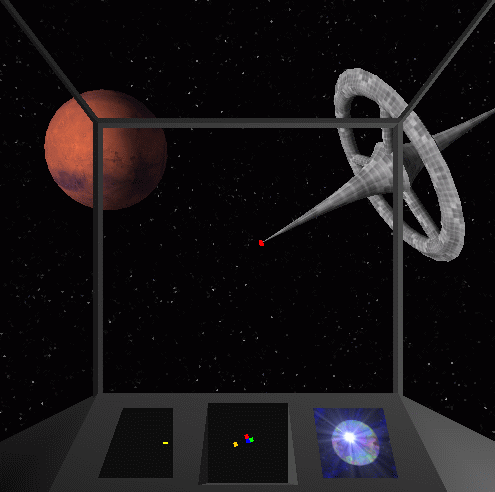
Inside a virtual spaceship, by student Matt Hibbs.
Professor: Nina Amenta
Lecture: MWF 10:00-10:50, 166 Chemistry
Lab Hours: Wds 2-4, in 71 Kemper
Teaching Assistant: Zehra Shah, zshah "at" ucdavis.edu
Discussion Section: Fri 3:10-4:00 166 Chemistry
Lab Hours: Thurs 1-3, 71 Kemper